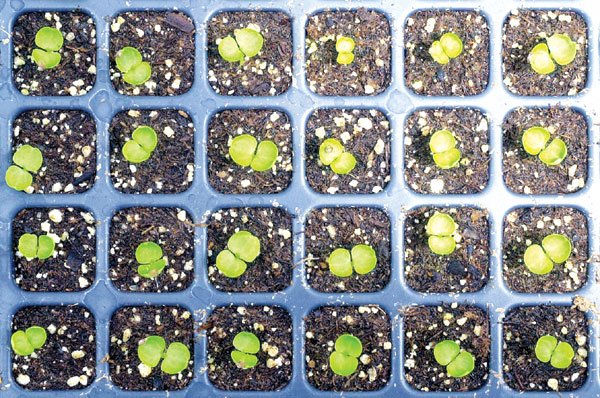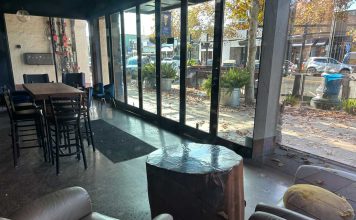The formula works well enough in nature: Seeds in the ground
plus time equals healthy vegetables, vibrant flowers and lush
plants. For the home gardener, though, often it’s a different
story.
That doesn’t mean you should give up altogether.
The formula works well enough in nature: Seeds in the ground plus time equals healthy vegetables, vibrant flowers and lush plants. For the home gardener, though, often it’s a different story.
That doesn’t mean you should give up altogether. Besides being a fun and rewarding experience, harvesting plants in the garden from seeds – as opposed to transplanting baby plants from a garden store – is an economical way to reap a variety of crops, said Katharine Wright, a master gardener with the Monterey Bay Master Gardeners, which covers San Benito County.
“A lot of people stick a plant in the ground and think it’ll grow right away, but it doesn’t quite work that way,” Wright said. “There are some things you have to do in between.”
Growing plants from seeds, also known as seed propagation, is a relatively simple process. One of the first steps is to research and purchase the desired types of seeds. Basil is a good choice for beginners, Wright said, as are annual plants and flowers and heartier crops such as carrots and radishes.
One advantage of seed propagation is it’s more cost effective than buying plants that already are growing. A 50-pack of tomato seeds is about $1.99, while an organic tomato transplant and an orchard tomato transplant are about $2.50 and $1.50, respectively, Wright said. Certainly a bang for your buck, although you may end up with a few too many of the juicy, red fruits.
“One problem is, who needs that many tomatoes? I know I don’t,” Wright said. “Usually, the seeds are only buyable for two to three years tops, so you have to use them in a certain amount of time before they go bad.”
But if you’re planning a larger garden, buying more seeds likely will be less expensive. Additionally, you’ll have a greater selection of plants to choose from, as a number of plants, including some heirlooms, are available exclusively in seed form.
After choosing your plants, the next step is to prepare the soil for planting. Wright recommended applying a light sprinkling of fertilizer – preferably organic, but chemical also would work – to the soil about two to three weeks prior to planting the seeds.
Some vegetables – such as tomatoes, peppers and squash – fare better if planted first in a tray and then transferred to a six-pack container before going into the ground for good, Wright said. Heartier crops, on the other hand, can skip the container phases, as they are better able to hold strong when planted in the ground first.
No matter where you start the seeds, paying attention to the condition of the soil and the spacing of the plants will make a difference in how they grow, said Joel Goldsmith, owner of Gilroy’s Goldsmith’s Seeds, which breeds and sells wholesale hybrid flowers. According to Goldsmith, the soil should be loose so plants have room to grow, and the surface should watered fairly regularly.
“You need to keep the soil moist for the first week or so, until you see the plants germinating,” he said. “But it doesn’t take a lot of water. If the seed is right on the surface, only the surface needs to be kept moist.”
If initially planting in containers, give the seeds time to adjust to outdoor temperature fluctuations before permanently transplanting them, a process known as “hardening off.” Set the containers outside during the day, gradually increasing the number of hours the plants are outside until they’re out almost the entire day. Be careful, however, not to give the plants too much direct heat or sun, and don’t keep them outside overnight.
Wright also recommended placing a heating pad made especially for plants and sold at garden-supply stores underneath the containers to keep the soil a moderate temperature. Another idea is to cut out the bottom of a two-liter, plastic soda bottle and place it over the container while the plants are outside, so they can acclimate to the sun.
“Kind of like a mini-greenhouse,” Wright said.
One of the most common mistakes gardeners make is transplanting the plants from their containers too early, Wright and Goldsmith said. Instead of taking hopeful guesses, there are a few basic guidelines to know when plants are ready to go outside full time.
The first indicator is height. Plants should be two to four inches high in their containers, with dark green, thick, hearty-looking leaves. Another consideration are the plant’s roots.
“If the soil falls off when you pick up the plant out of its container, the root system isn’t ready yet,” Goldsmith said. “The soil should stay attached to the root when picked up.”
A plant’s readiness to be transplanted also can be judged by how sturdy it appears. Two common enemies of baby plants are snails and slugs, and if the plant looks substantial enough to battle the pests, it probably is, Wright said.
Another common problem, though it sounds comical, is remembering where you planted the seeds. Wright recommended inserting small wooden sticks with the seed packets of the respective plants attached at the end of each row of crops. The rows can be differentiated by creating small trenches with mounds of dirt.
As a general rule, plants need about two feet of root space for every foot of height. A 4-foot-high tomato plant, for example, needs roughly eight feet of root space.
“Tomato plants also need to be planted a minimum of two feet apart from each other,” Wright said. “Otherwise, the plants spend more time competing with each other for root space instead of growing.”
Although the product of the plant – the vegetable, for instance, or the bloom of the flower – likely won’t differ much whether planting with seeds or transplants, the satisfaction of growing a garden from scratch might be worth the effort.
“It’s a lot of fun to plant the seeds and watch them grow,” Goldsmith said.
Good things come to those who wait.












